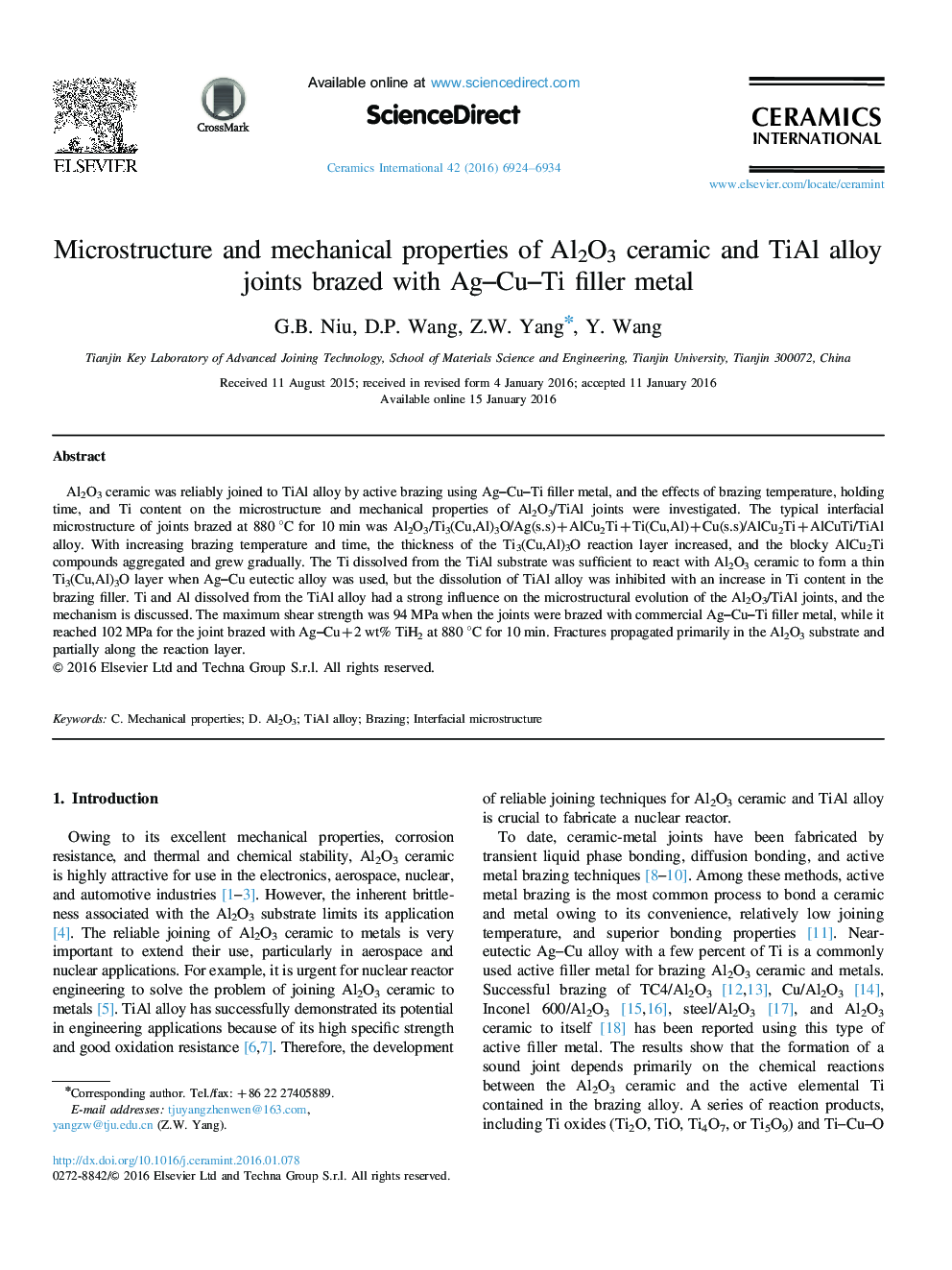| Article ID | Journal | Published Year | Pages | File Type |
|---|---|---|---|---|
| 10624270 | Ceramics International | 2016 | 11 Pages |
Abstract
Al2O3 ceramic was reliably joined to TiAl alloy by active brazing using Ag-Cu-Ti filler metal, and the effects of brazing temperature, holding time, and Ti content on the microstructure and mechanical properties of Al2O3/TiAl joints were investigated. The typical interfacial microstructure of joints brazed at 880 °C for 10 min was Al2O3/Ti3(Cu,Al)3O/Ag(s.s)+AlCu2Ti+Ti(Cu,Al)+Cu(s.s)/AlCu2Ti+AlCuTi/TiAl alloy. With increasing brazing temperature and time, the thickness of the Ti3(Cu,Al)3O reaction layer increased, and the blocky AlCu2Ti compounds aggregated and grew gradually. The Ti dissolved from the TiAl substrate was sufficient to react with Al2O3 ceramic to form a thin Ti3(Cu,Al)3O layer when Ag-Cu eutectic alloy was used, but the dissolution of TiAl alloy was inhibited with an increase in Ti content in the brazing filler. Ti and Al dissolved from the TiAl alloy had a strong influence on the microstructural evolution of the Al2O3/TiAl joints, and the mechanism is discussed. The maximum shear strength was 94 MPa when the joints were brazed with commercial Ag-Cu-Ti filler metal, while it reached 102 MPa for the joint brazed with Ag-Cu+2 wt% TiH2 at 880 °C for 10 min. Fractures propagated primarily in the Al2O3 substrate and partially along the reaction layer.
Related Topics
Physical Sciences and Engineering
Materials Science
Ceramics and Composites
Authors
G.B. Niu, D.P. Wang, Z.W. Yang, Y. Wang,
